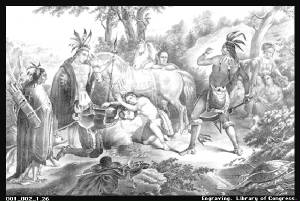 Americas, antiquity and prehistory
of the 
Related: Native American
|
study of the origins of the aboriginal peoples of the Americas. Archaeologists
believe humans had entered and occupied much of the Americas by the end of the Pleistocene epoch , but the date of their original entry into the Americas is unresolved.
The term “Paleo-Indians” is generally used to refer to early Native Americans up through the end of the Ice Age
(c.8000 BC). Most authorities believe they entered North America from Siberia as small bands of migratory big-game hunters.
Such a journey could have been made by means of a land bridge, known as Beringia, which emerged several times during
the Pleistocene. The Asian derivation of the Native Americans is supported by the physical similarity of
the native populations of East Asia and the Americas; both are classified within the Mongoloid race, and studies indicate
that the DNA patterns of modern Native Americans are very similar to those of Asian populations. All human skeletal remains
from the Americas, including the very oldest, have been found in geologically recent contexts and belong to anatomically modern
human beings. While recent analyses of the early skeletal material from the Americas indicate these populations exhibited
considerable variability, and had dental and cranial characteristics rather different from those of modern Native American
populations, such differences probably resulted from a process of gradual physical evolution after one or more Asian-derived
groups had reached the Americas.
The best known Paleo-Indian culture is that of the fluted-point
hunters (see Clovis culture and Folsom culture ), found throughout much of North America and dating to c.9300-8000
BC; they were specialized big-game hunters adapted to an open, temperate, terrestrial environment. For many years, most authorities
believed the fluted-point hunters were the oldest Paleo-Indians in the Americas. The Paleo-Indians had reached the southern
tip of South America by 9000-8500 BC
During the Pleistocene, glaciers covered much of North America,
and the growth and contraction of these giant ice sheets may have played a crucial role in the timing of human migration into
the Americas. During the height of the Wisconsin Glaciation (c. 17,000-13,000 BC)—and perhaps several thousand years
before and afterward as well—the ice formed a continuous sheet across N North America, preventing any overland migration
from Alaska into the Great Plains of North America. For much of the 20th century, most Americanists held that the first Paleo-Indians
entered lower North America only after the height of the Wisconsin Glaciation, when an ice-free corridor had emerged between
the continental ice sheets in Canada. This development may have taken place as recently as 10,000 BC Then, according to this
theory, the first Paleo-Indians moved rapidly southwards into North and South America, the speed of their migration being
conditioned by the great abundance of game animals and the absence of human competitors in this virgin territory. These first
inhabitants of North America were identified as the Clovis and Folsom fluted-point hunters.
After c.8000 BC the Pleistocene ended. Changing environmental
conditions and the extinction of Pleistocene megafauna forced human groups to diversify their economic strategies and become
more reliant on foraging and capturing small game. Known collectively as Archaic adaptations, these new subsistence strategies
were highly specialized responses to local environmental conditions and actually emerged in different times in different places.
In some regions, such as the Great Plains of North America, human reliance on big-game hunting continued until historic times.
In contrast, the early South American sites described above indicate that a subsistence strategy based on plant foraging,
the hunting of small game, and fishing actually emerged during the Pleistocene, thereby permitting an early colonization of
a diversity of environments. In some areas of the New World, most notably the Andean region, the Amazon basin, Mesoamerica,
the SW United States, and the Mississippi Basin and Eastern Woodlands, Archaic Native Americans evolved into sedentary agricultural
societies, generally beginning about 2000 BC, although recent radiocarbon dating of Caral, in Peru's Supe valley, indicates
that a city of several thousand arose there c.2600 BC
Natives, North American 
Related: Native American
|
peoples who occupied North America before the arrival of the Europeans
in the 15th cent. They have long been known as Indians because of the belief prevalent at the time of Columbus that the Americas
were the outer reaches of the Indies (i.e., the East Indies). Most scholars agree that Native Americans came into the Western
Hemisphere from Asia via the Bering Strait or along the N Pacific coast in a series of migrations. From Alaska they spread
east and south. The several waves of migration are said to account for the many native linguistic families (see Native American languages ), while the common origin is used to explain the physical characteristics
that Native Americans have in common (though with considerable variation)—Mongoloid features, coarse, straight black
hair, dark eyes, sparse body hair, and a skin color ranging from yellow-brown to reddish brown. Some scholars accept evidence
of Native American existence in the Americas back more than 25,000 years, while many others believe that people arrived later
than that, perhaps as recently as 12,000 years ago. In pre-Columbian times (prior to 1492) the Native American population
of the area N of Mexico is conservatively estimated to have been about 1.8 million, with some authorities believing the population
to have been as large as 10 million or more. This population dropped dramatically within a few decades of the first contacts
with Europeans, however, as many Native Americans died from smallpox, influenza, measles, and other diseases to which they
had not previously been exposed. Native Americans were far more likely to die. From prehistoric times until recent historic
times there were roughly six major cultural areas, excluding that of the Arctic (see Eskimo ), i.e., Northwest Coast, Plains, Plateau, Eastern Woodlands, Northern,
and Southwest. Information about particular groups can be found in separate articles and in separate biographies and subject
articles
|
|
Native American music 
Related: Music History
|
The music of Native North Americans is primarily a vocal art, usually
choral, although some nations favor solo singing. Native American music is entirely melodic; there is no harmony or polyphony,
although there is occasional antiphonal singing between soloist and chorus. The melody is, in general, characterized by a
descending melodic figure; its rhythm is irregular. There is no conception of absolute pitch and intonation can appear uncertain,
the result of the distinctive method of voice production, involving muscular tension in the vocal apparatus and making possible
frequent strong accents and glissandos. Singing is nearly always accompanied, at least by drums. Various types of drums and
rattles are the chief percussion instruments. Wind instruments are mainly flutes and whistles. For the
Native American, song is traditionally the chief means of communicating with the supernatural powers, and music is seldom
performed for its own sake; definite results, such as the bringing of rain, success in battle, or the curing of the sick,
are expected from music. There are three classes of songs—traditional songs, handed down from generation to generation;
ceremonial and medicine songs, supposed to be received in dreams; and modern songs, showing the influence of European culture.
Songs of heroes are often old, adapted to the occasion by the insertion of the new hero's name. Love songs often are influenced
by the music of whites and are regarded as degenerate by many Native Americans.
QUESTIONS ON NATIVE AMERICAN INDIANS
1. How did the native American Indians come into North America?
2. What are the similarities between Asiatic people and the native Americans?
3. What is the main source of food for the Native Indians?
4. Why did the population of these people greatly diminish when the Europeans came to America?
5. What are the characteristic of native american music?
6. What are the types of songs they have? Why do these people sing?
7. Give examples of native american tribes. What part of the United States do they live?
8. What are some of their traditions and cultural ways?
9. How do you see the native americans today? explain your answer.
10. Were they treated unfairly in the past? explain your answer.
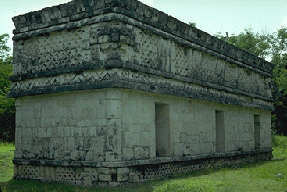 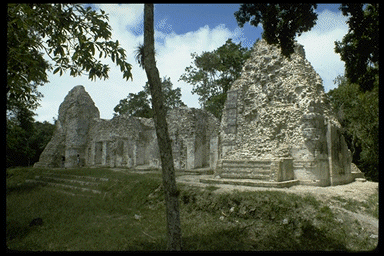 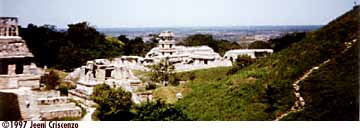 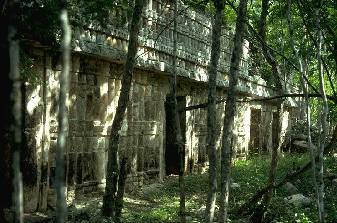 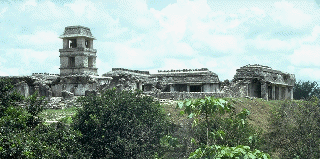
Natives, Middle American 
Related: Aztec Indian
|
aboriginal peoples living in the area between present-day United States
and South America. Although most of Mexico is geographically considered part of North America and although there have been
cultural contacts between Mexican groups and the Pueblo of the SW United States, the cultural development of most of Mexico
belongs, in fact, to that of Middle America. In the southern portion of the valley of Mexico and in the jungle region of Yucatán,
ancient Mexico reached its highest cultural achievements. The Maya had links with the Chorotega of Nicaragua and Honduras, and these in turn had contacts with the Chibcha of Colombia, thus establishing a Central American cultural chain between
the civilizations of Mexico and those of the Andean region. Highly developed civilizations flourished in Mexico after the
domestication of corn and the rise of agricultural communities; the Olmec , the Maya, and the cultures of the central plateau, Teotihuacán, Toltec , Mixtec , Zapotec and Aztec , developed architecture, agriculture, the use of stone—and sometimes
of metal—to a high, often remarkable, degree. The Quiché and the Cakchiquel flourished in Guatemala; besides these and the Chorotega,
the southern tip of Central America did not produce as highly developed civilizations as the rest of Middle America. Today
many of the Native Americans of Panama, Nicaragua, and Honduras, such as the San Blas, the Mosquito (see Mosquito Coast ), and the Lenca of Honduras, bear the imprint of Carib ancestry or
influence. The Mexican Native Americans after the Spanish conquest in the 16th cent. retained their ancestral mode of life
in some regions, but they were mostly a subjugated group until the 20th cent. Native American artisans did make notable contributions
to the early development of the arts, notably in painting and architecture, but the Native Americans were mostly used as laborers
under the encomienda and the repartimiento, and thousands eventually became the victims of
peonage . It was not until after the revolution of 1910 and the indianismo
movement of Emiliano Zapata that efforts were made, notably by the Mexican president Lázaro Cárdenas,
with regard to the economic and social development of the Native American. Today the descendants of the above-mentioned Native
American groups, as well as such peoples as the Huastec , the Tarascan , the Yaqui , and the Tarahumara , constitute a powerful cultural and economic element of Mexican life.
Related: South American Indian
Archaeological studies have shed light on the early cultures of the rugged Andean region. Extensive
remains have established the existence of developed cultures at Chavín de Huántar and the Paracas peninsula in Peru. The Mochica , the Chimu , and the Nazca were three other major early Peruvian cultures. In Bolivia the impressive ruins at Tiahuanaco bear witness to yet another early civilization. The Chibcha of the N Andes, the Aymara of the central Andes, and the Araucanians of Chile are considered to have produced some of the socially complex pre-Columbian
cultures (see pre-Columbian art and architecture ) of the Andes, but the most impressive civilization,
both from the point of view of technical achievement and of political structure, was unquestionably the empire of the Inca . The modern descendants of these Native Americans form an integral part of
the populations of Ecuador, Peru, and Bolivia and to a lesser extent of NW Argentina and Chile. Quechua , the Inca language, is the most widespread linguistic stock, but Aymara is
also important (see Native American languages ).
Related: South American Indian
|
MAYAN CULTURE
Throughout Maya history, populations increased and agriculture, correlatively,
became more intensive. Linked with this process, social organization became increasingly hierarchical, with increasing differentiations
of wealth and status, shown primarily in the differential size and elaborateness of both residences and public buildings.
Settlements in civic centers show a repeated pattern of arrangement of residences, pyramidal structures, and temples around
courts or plazas, with buildings made of cut stone masonry, sculptured and stuccoed decorations, corbel-vault stone roofs,
and paved plazas. Such groupings in small, poor rural settlements involve buildings of largely perishable materials and small
size. Most of the elaborate carvings, relief and full-round, and the paintings, mural and ceramic, which are the hallmarks
of Classic Maya art, come from the civic centers. These civic centers were numerous, including Copán in Honduras, El Mirador, Piedras Negras , Tikal , and Uaxactún in the N central Petén region of Guatemala, and Palenque and Uxmal in Mexico.
The basic Maya structure was the hay huts which housed most of the
Mayan population. The walls were made of mud or stone and were covered with wooden poles. These poles were no taller that
2. 20 meters. On the top of these sticks, the structure rests and it has another 3.5 to 4.5 meters of height on top. These
sticks hold together the strongly tilted, two sided hay form.
As for the stone huts, they were of course, made of stone, lime stone
to be exact. The reason for the use of lime were that they were very abundant and the shape of the very easy form. The many
deposits of these stones helped build these higher class homes. There was, however, similarities between them and the hay
huts. Of course, the main difference was the material used to make the two buildings. But, the similarities would suggest
that the roofs' slope gave place in the beginning to the idea that the sticking-out stones dome roof.
Almost every Maya structure varies in height
according to the substance that was used on the building on the top. They range from the low terraces that ranged from 50
cms to 2 meters high. Sometimes, there were no terraces so they were palaces and inhabitable buildings, elevated up to 45
meters in the case of a temple. An example is the Temple IV of Tikal.
The steps, they were usually wide and steep. They
were built on either one or more sides. Sometimes, the steps were placed on the back side of the top of the building so ample
space was left between the front and the sets of steps that gave access to them.
Usually, most Maya facades were pointed horizontally
divided in two main fringes. The medium mold that runs without interruption around the building was more or less from the
middle and up on the wall.
As for the superficial plans, they depended
according to the use of the building. Temples generally have only two chambers, one behind the other. One could enter by a
door which opened on the far wall. The interior chambers was sanctuary and the exterior rooms was used for less reserved ceremonies.
In a palace, the type of construction was almost always two long files of chambers, one behind the other.
These few observations are specially applied
to the northern region palaces. However, in Piedras Negras located in the central region, doors on the middle and transversal
walls are not rare. The windows do not exist but, sometimes, they are at the upper middle of the facade by very small rectangular
openings.
Mayas may have cut and polished the stone blocks individually
for their buildings. The exterior as well as the interior walls were originally covered with a substance called lime stucco.
This substance, stucco, is defined as a durable finish for exterior walls composed of sand, cement and lime, and applied when
wet. Stucco covered all of the joinings. This was very obvious in the Yucatan buildings that made no effort to recarve the
joinings.
If you look on the outside of a Mayan temple,
it may seem that there is not much decoration to be found. As a rule, the facades used were vertical molds on the middle and
upper section. The last ones were made by lines of rock on these walls and received a mortar layer finish.
Some buildings that were built in the Classic
Era in the central region have sloped facades above the middle mold level. The upper part of the facade later on are between
the middle and the upper molds, and decorations were placed on them with stucco, or, a type of shapable plaster. This decoration
idea on the facade reached its most notable point during the Classic Era. This decoration era occurred around 340 A. D. The
buildings were beautifully decorated with a complicated drawing in lime stucco that was held by ordinary stone that popped
out of the facade.
Like the Chinese, the Mayas occasionally decorated
their buildings with carvings made out of carved stone. Used in the exterior of the building, they were placed on broad murals,
ramps along the stairs, and\or in the front of the grades. These sculptures are engraved sometimes with hieroglyphic inscriptions.
An examples of sculptures on a broad mural includes Piedra Negras. For sculptures along the stairs, they can be found on Palenque,
Copan, and Quirigua. And as for the hieroglyphic inscriptions, those can be found in Copan, Quirigua, Palenque, Yaxchilan,
Naranjo, Seibal, Etzan, and La Amelia.. Drawings include an occasional, human, animal, bird, or serpent on the upper
half of the facades.
Even though there is not much information on this subject,
I thought that this was a participially interesting section, and so did my colleagues. There are two types of roofs which
are commonly found with Mayas. First, the sticking-out stone, dome roof, and second, the concrete covered beam roofs of lime.
There is not much information on the first type, but a little more on the second. This type of roofing is flat and made of
beams and lime concrete. I has been found in Piedras Negras, Uaxactun and Tzimin Kax in the Classic Era. Some can also be
found in the Post-classic Era in Chichen Itza and in some recent places along the oriental Yucatan shoreline. Main examples
include Tulum and in Chac Mool.
This type of concrete roof was built on the top of crossed
beams. They filled up empty space with sticks, and as for the beams of lime concrete roof, it was 30 or more centimeters thich.
Once the lime concrete roofing had dried firmly, the beams were taken out from underneath. Today, this method is still being
used by the Yucatan.
However, it is not to be said that this type of roof
is not fool proof. Once the roofs starts to crumble, it is hard to tell if it is safe to stay in that home or not. That makes
evacuation difficult and dangerous.
One of the best know architectural sites for the Mayas
is, of course, their huge and breathtaking temples. The Mayas built their temples on immense pyramids with steeped bases,
and each side of the pyramid had a set of steps that lead up to the temple. The temples were built out of beautifully carve
stones and its only floor was adorned on the exterior with elaborate and wonderful stucco decorations. As for the interior,
it was decorated with mural paintings.
Of course, these temples were built for
religious purposes. For example, the Sun Temple was built to worship the sun god. Inside of these temples, they Mayas preformed
all type of ceremonies within two small, stepped, dark rooms inside of this temple. The back wall of the inner room has a
carved face of this god. The architects have also decided to have a sky roof to truly worship[ their god. This shows how creative
and spiritual they were.
Of course, there are many more examples of these temples
all around the Mayan areas. For examples, there is an enormous one in Uxmal. It has a long flight of stairs which goes up
one side and leads to a smaller temple on the top. In addition to normal temples, the Maya's also had a temple and an observatory
in one. For examples, in the city of Chichen Itza, the Mayas studied the movements of the earth, stars, and the planet Venus.
This is yet another ingenious thing that the Mayas have thought of.
Bibliography:
Chrisp, Peter, Looking Into the Past: The Maya, New York, Thomson
Learning, 1994
Maker Unkown, [Online] Available, http://udgftp.cencar.udg.mx/ingles/CUAAD-INGLES.html, June 20, 1997
"Basic Structure" photographs and diagrams provieded
by Nancy McNelly.
|
|

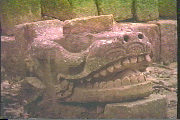
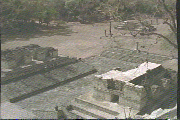
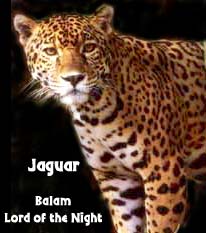 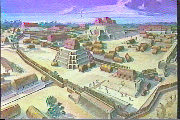
Archaeologists divide the prehistory of the Maya region into the
Formative (c.1500 BC-AD 300), Classic (300-900), and Postclassic (900-1500) periods, and concur that in most parts of this
large region the most spectacular florescence occurred during the Classic period. This was followed, in much of the area with
the exception of Yucatán, by a demographic collapse at the end of which (c.AD 1100) close to 90% of the population had been
lost. Although little understood, the earliest inhabitants seem to have been relatively few in number and practiced shifting
cultivation.
Throughout Maya history, populations increased and agriculture, correlatively, became
more intensive. Linked with this process, social organization became increasingly hierarchical, with increasing differentiations
of wealth and status, shown primarily in the differential size and elaborateness of both residences and public buildings.
Settlements in civic centers show a repeated pattern of arrangement of residences, pyramidal structures, and temples around
courts or plazas, with buildings made of cut stone masonry, sculptured and stuccoed decorations, corbel-vault stone roofs,
and paved plazas. Such groupings in small, poor rural settlements involve buildings of largely perishable materials and small
size. Most of the elaborate carvings, relief and full-round, and the paintings, mural and ceramic, which are the hallmarks
of Classic Maya art, come from the civic centers. These civic centers were numerous, including Copán in Honduras, El Mirador, Piedras Negras , Tikal , and Uaxactún in the N central Petén region of Guatemala, and Palenque and Uxmal in Mexico.
Neither during the Classic period
nor at any other time does there seem to have been any political unification of the area as a whole. Rather, political organization
seems to have been described by a series of small, city-state-like polities, each characterized by its own internal differentiation
of status and power. While much earlier literature refers to professional rulers and priests, the present view is that the
higher-status individuals were more probably heads of patrilineages (see kinship ), and that much of the religious complex was centered on ancestor worship
rather than on universalist gods. In contrast to the civilizations of central Mexico, urbanization and occupational differentiation
in the Mayan region were poorly developed, even during the Classic period. On the other hand, the Classic Maya developed a
system of written hieroglyphic script, largely syllabic in nature, which, although once considered astronomical or religious
in content, is now considered primarily dynastic and political. Concomitantly, a vigesimal (base 20) numerical system was
used, notable in its development of the zero as placeholder; several types of calendar reckonings were in simultaneous use.
The period following AD 900 was one of rapid decline, and many of the major cities were abandoned.
In the heartland of the lowland Maya, most major centers had been abandoned, probably more gradually than has been supposed,
by around AD 1100. In the Yucatán highlands settlement persisted, with a probable colonization of the site of Chichén Itzá by Toltec from Central Mexico. By the time of Spanish conquest, most Mayan populations
were centered around small villages.
QUESTIONS ON SOUTH AMERICAN INDIANS
1. What contributed to the development of cities in early South America?
2. What are the characteristics of their architecture?
3. Describe a typical Mayan house.
4. Describe a typical Mayan temple.
5. Did the Mayan use urban planning? How was it done?
6. What is the political structure of the Mayan society?
7. Why did the Mayans build temples?
8. What are the parts of the temple?
9. Hiow did they decorate the temples?
10. What caused the downfall of early South American societies?
|
 |
|
| pre-Columbian art and architecture |
| |
| |
| works of art and structures created in Central and South America
before the arrival of Europeans in the Western Hemisphere. For many years the regions that are now Mexico and Guatemala and
the Andean region of South America had been the cradle of indigenous civilizations whose remains bear witness to an exceptional
degree of artistic advancement. |
1 |
| For Native American art in North America, see North American Native art. |
2 |
| |
| The Cultures of Central America |
| |
| The Maya |
| The Maya occupied the general area of Yucatán and adjacent parts of Central America
from very early times. Their roots were in the Archaic period (c.2000 B.C.), but it was only during the Late Formative (300
B.C.–A.D. 150) and the Proto-Classic (A.D. 150–300) periods that the traits associated with the Classic Maya were
developed. Their greatest artistic achievements included their elaborate calendar, writing, palaces and temple pyramids with
vaulted rooms made of limestone, polychrome pottery, stone stelae, and stylized wall paintings and bas-reliefs. |
3 |
| The Classic Maya (A.D. 300–900) was the apex of Maya civilization
and is described as that period when the Maya inscribed the “Long Count Calendar” on their monuments. The remains
of Bonampak, with its famous murals, can be dated to shortly after 800. Maya cities
were ceremonial centers, and some of the edifices may be more properly identified as sculptured monuments. Maya architectural
styles are found in three main regions: the Petén district (Uaxactún and Tikal); the cities of the river valleys, such as Piedras Negras and Palenque; and the cities of central and N Yucatán (Uxmal). |
4 |
| In the valley of the Motagua River to the south are Copán and Quiriguá, where sculpture flourished in the form of huge, elaborately carved
stone stelae; more delicate forms and a refined spatial sense are evident in the famous stucco sculpture of Palenque and in
the airiness and grace of its buildings. In the flat, dry country of N Yucatán, Maya architecture underwent changes in style.
The erection of stone stelae was largely abandoned, and decoration, notably at Uxmal, became geometric. The cause of the collapse
of the Maya civilization is not precisely understood. The culture persisted over so long a period that it is easier to understand
the rest of Mesoamerican art and culture from the framework of Maya chronology. |
5 |
| |
| The Olmec |
| The Olmec civilization, to the west, in the area of Veracruz and Tabasco, Mexico,
was developing in the Formative period. Specifically, the period 800 to 400 B.C. marks the finest period of Olmec art as typified
by the finds made at the site of La Venta. It is believed that the Olmec devised the Long Count Calendar and invented writing
and that they may well be the source of these developments among the Maya. Noted for the excellence of their stone carving—ranging
from small, finely detailed jade objects to colossal, often realistic basalt heads—the Olmec frequently used a motif
combining human and jaguar features. |
6 |
| |
| Teotihuacán |
| Teotihuacán is much to the west of the Olmec and Maya areas and dates from the 1st
cent. A.D. to A.D. 700. The major part of the site and the height of its artistic expression belong to the periods Teotihuacán
II and Teotihuacán III (c.300–700). Teotihuacán is an urban center, perhaps the greatest in Mexico; its monumental pyramids,
temples, and royal processional roads are an extraordinary architectural achievement. |
7 |
| In the latter part of Maya Early Classic (c.A.D. 400–c.A.D.
600) there is evidence of great influence from Teotihuacán, as exemplified at the site of Kaminaljuyú and in varying degrees
at other sites, including Tikal and Uaxactún. Erected on high land above the surrounding swamps, the latter two sites reveal
their massive, richly decorated temples in the midst of tropical jungles. The site of Teotihuacán apparently was deliberately
destroyed by invaders c.700 and thereafter ceased to be a factor in Maya civilization. |
8 |
| |
| The Toltec |
| After the fall of Teotihuacán, a period of nearly two centuries (700–900)
seems to have ensued during which there was no single dominant force, but a number of warring factions. One of these, the
Toltec, made their capital at Tula (c.900–1200), northwest of Teotihuacán. The Toltec achieved power
and dominated much of N and central Mexico until they were vanquished in 1156 or 1168. They invaded Maya country, principally
Chichén Itzá (c.987). There they had a profound influence as revealed by the pyramids
at Tula and Chichén Itzá, with their deep colonnades (an unusual feature in Mesoamerican architecture) and their decorative
bas-relief and sculptured structural elements, e.g., the 15-ft-tall (4.5 m) caryatids at Tula. Toltec occupation has also
been identified at other sites in the Yucatán. Indications are that Chichén Itzá was abandoned by the Toltec around 1224. |
9 |
| |
| The Aztec |
| The final great native conquest in Mesoamerica was by the Aztec, who rose to power following a period of anarchy after the destruction
of the Toltec’s Tula. By 1344 the Aztecs had founded their magnificent capital, Tenochtitlán, at the site of present-day Mexico City in the Valley of Mexico, which
became one of the architectural wonders of ancient America. Aztec art was eclectic, drawing on the traditions of conquered
areas; but under the influence of the harsh Aztec religion, it developed a unique character. The importance of human sacrifice
in the cult of the war god, Huitzilopochtli, permeated life and art, and representations of skulls, hearts, hands, and sacrificial
scenes were common. |
10 |
| Much of the stone sculpture was huge and elaborate, a remarkable
example being the statue of the earth goddess Coatlicue. Masses of intertwined serpents dominate the statue, which bears a
necklace of human hearts and hands. Less ominous subjects, such as the plumed serpent, Quetzalcoatl, and various animals,
were often beautifully carved in a smooth, compact style. Featherwork, jade carving, goldwork, extraordinary ceremonial vases,
and superb textiles were produced by the artisans of subjugated groups, especially the Mixtec. Aztec power over Central Mexico extended until the arrival of Cortés
in 1519. |
11 |
| |
| Other Mexican Cultures |
| The area of the Mixtec and Zapotec in Oaxaca, Mexico, was not completely conquered by the Aztecs. The Zapotec originally
occupied the site of Monte Albán from late Olmec times (c.600 B.C.) until about A.D. 900. Then a new
seat of Zapotec civilization was founded at Mitla. Later the Mixtec began to infiltrate, intermarry with, occupy, and
absorb the Zapotec. Apart from architecture, the Mixtec also excelled at the minor arts: goldwork, jewelry, vessels fashioned
with semiprecious stones, turquoise and feather mosaics, extremely fine polychrome pottery, and painted books known as codices. |
12 |
| Many of the Mexican cultures produced ceramic figurines and pottery,
often of superior artistic merit. The site of Tlatilco, in the Valley of Mexico, has yielded famous ceramics of remarkably
early date, about 500 B.C. Delicacy of detail characterizes the figurines of Teotihuacán, and the finely decorated funerary
urns of Monte Albán (c.400 B.C.) are particularly well wrought. In the western states of Nayarit, Jalisco, and Colima, early
cultures produced an enormously varied array of fanciful and often grotesque terra-cotta figurines and pottery during the
classic period, A.D. 300 to 900. The Tarascan of Lake Pátzcuaro were one of these groups; they still produce excellent
lacquerware. In the jungle states of Veracruz, Campeche, and Tabasco many sites, particularly Remojadas, have yielded fine
examples of clay sculpture. |
13 |
| |
| The Cultures of South America |
| |
| Ancient Peru |
| The first great art style of the geographical area that is now Peru
was that of the civilization that flourished at Chavín de Huántar in the northern highlands c.900 to 200 B.C. A more or less contemporaneous
culture of the north coast produced a style of pottery known as Cupisnique. The Paracas culture of the south coast, of the
same era, left some of the most beautiful textiles of pre-Inca Peru as well as fine pottery decorated with resin paint. Excellent
painted ceramics and beautiful weavings were also characteristic of the Nazca civilization (c.200 B.C.–A.D. 600) to the south, which also produced
the huge and mysterious “Nazca lines.” |
14 |
| The Nazca’s contemporaries on the north coast, the Mochica, surpassed them in the art of painted pottery. Battle scenes, rituals,
animals, and mythological beings were masterfully depicted. Their ceramic “portrait vessels” in the form of human
heads are the high point of realism in pre-Columbian art. They were also master builders, the Mochica Pyramid of the Sun being
the largest in South America. During the following period (c.600–800), the Tiahuanaco culture gained ascendancy. With the decline of Tiahuanaco the kingdom
of the Chimu flourished. Their capital, Chan Chan, has long been considered one of the great centers of ancient Peru. |
15 |
| |
| The Inca |
| Chan Chan was surpassed only by the colossal achievements of the
Inca, who conquered the Chimu in the latter part of the 15th cent. As engineers
the Inca were unsurpassed in ancient America. Their agricultural terraces are still in use, and the extensive network of roads
and bridges that spanned their empire would merit the envy of modern road builders. However, their cities and fortresses remain
their towering achievement. The great cities of Cuzco and Machu Picchu and the imposing fortresses of Sacsahuamán and Ollantaytambo are typical examples of their skill. The Inca also
excelled at stone carving and metalwork, achieving in this latter art a degree of perfection comparable to that reached anywhere
in the world. Their civilization fell to the Spanish invaders in 1538. |
16 |
| |
| Bibliography |
| See H. D. Disselhoff, The Art of Ancient America (tr. 1961);
G. Kubler, The Art and Architecture of Ancient America (1962); S. K. Lothrop, Treasures of Ancient America (1964);
F. Dockstader, Indian Art in Middle America (1964) and Indian Art in South America (1967); H. von Winning, Pre-Columbian
Art of Mexico and Central America (1968); F. Anton, The Art of Ancient Peru (tr. 1972). See also bibliography under
individual cultures, e.g., Aztec. |
17 |
| |
|
 |
|
|
 |
|
|
 |
|
|
|
|
Enter supporting content here
|
|
|
 |

